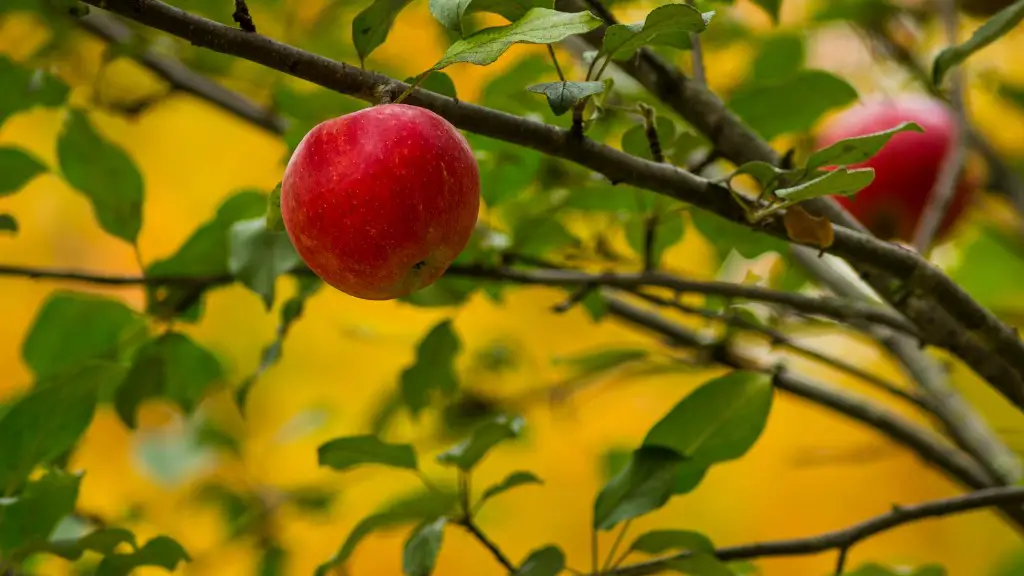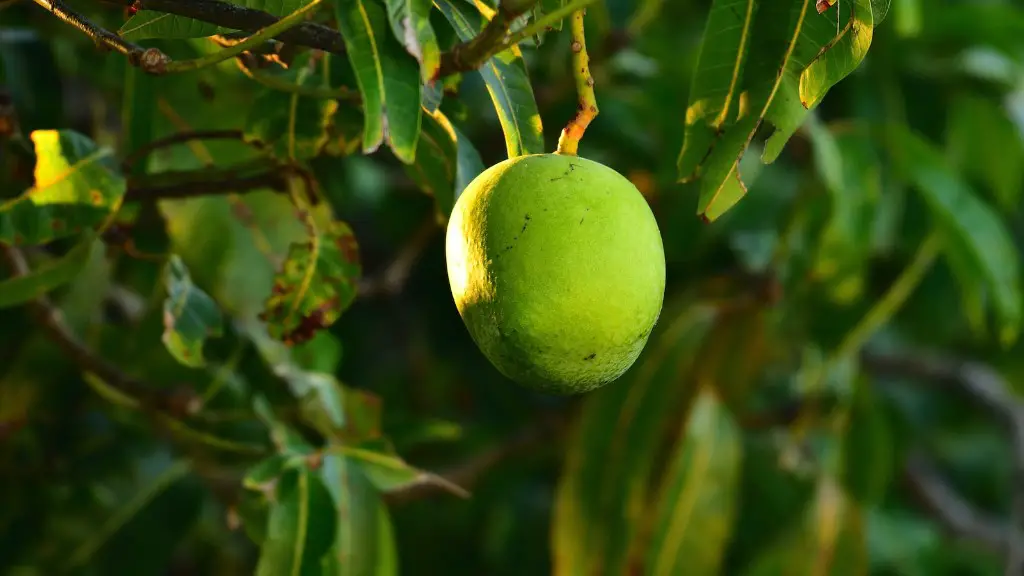The avocado tree may be small when planted but, depending on the variety, it can grow to up to 100 feet tall. Native to Mexico, Central and South America, the avocado tree is an evergreen tree that has become popular worldwide due to its delicious fruit. There are many different avocado varieties, including Hass, Bacon and Fuerte, but all of them require warm temperatures and adequate rainfall.
Depending on the climate, a mature avocado tree can reach heights of 25–30 feet and widths of 25–35 feet. Because they grow so big, an avocado tree must be planted in an adequate space where it is allowed to grow without being crowded. The more space the tree has, the larger the fruit harvest will be. Generally speaking, a mature avocado tree can produce 300–600 fruits per year.
Like other tree fruits, avocado requires pruning in order to sustain its health and production. Pruning helps reduce the size of the plant and improve the quality of the fruits. It also prevents the tree from growing too large and sprawling over its allotted space. An avocado tree should be pruned at least once a year; more if needed. This helps to regulate the growth and make sure the tree stays in optimum condition.
Avocado trees are relatively low maintenance, but they do require basic care. They should be watered regularly, and mulch should be added to the soil to absorb the water and lock in the moisture. Fertilizer should also be applied once a year to promote healthy growth. To avoid pests, it is important to check the tree regularly and take care of any pests or disease quickly.
Avocado trees can live a long time if they are taken care of properly; some trees have lived as long as 200 years. These trees can also re-fruit, which means that even after the tree has been harvested, it may still produce fruits in the future. This makes avocado trees a great investment for gardeners, as they can still produce fruits for years after planting.
Overall, the avocado tree is a great addition to any garden or farm. Not only does it provide delicious fruits, but its easy care and long life make it an ideal tree for those looking for a long-term investment. With proper care, a mature avocado tree can provide much-needed shade, fruits and accessories for years to come.
Soil Preparation
Before planting an avocado tree, special attention should be placed on the soil preparation. The soil should be amended with organic material to help the tree retain moisture and nutrients. It can also be beneficial to put in a slow release fertilizer to help the tree establish itself in the ground. An avocado tree needs good drainage to thrive, so compost and other materials may be added to improve the quality of the soil and provide better drainage.
The soil should also be checked for pH levels; an ideal pH range is 6.0 to 7.0 for most avocado trees. If the soil is not within this range, it can be amended with lime to adjust the pH levels. This will help make sure the tree can absorb all the essential nutrients from the soil and that the fruit produced is of the highest quality.
Harvesting Avocados
Avocados can be harvested when the fruit is still green, or when it has fully ripened. A ripe avocado is usually darker in color and yields to gentle pressure. For most commercial purposes, ripened avocados are usually more desirable as they have a better taste and texture. Depending on the variety, it can take anywhere from 4 to 8 weeks for an avocado to fully ripen.
To harvest an avocado, a hand picker should be used so as not to damage the tree or the fruit. If the tree is tall, a ladder or other equipment may be used to access the fruit. Once the avocados have been picked, they should be handled with care to avoid bruising. They should also be immediately transported to be sold or eaten.
Storage and Preservation
Once an avocado has been harvested, it should be handled with care to preserve its freshness and taste. Avocados can be stored at room temperature for a few days, or refrigerated for a longer shelf-life. To store an avocado, it should be placed in an air-tight container and refrigerated; this will help to keep the fruit fresh and prevent it from molding or spoiling.
Avocados can also be preserved by freezing or canning. To preserve an avocado, it should be cut into pieces and then frozen or canned. This will help to keep the fruit fresh, and can be used in recipes or smoothies later on. It is important to note that, although freezing and canning will help to preserve an avocado, the texture and taste may not be as good as a freshly picked one.
Disease Control
Avocado trees may be prone to certain pests and diseases, such as root rot, canker and blight. It is important to be aware of these diseases and take preventative measures to avoid their spread. To prevent disease, the tree should be watered only when the soil is dry, and any dead or diseased branches should be removed immediately.
If disease is detected, it is important to take action quickly. Treatment methods can vary, depending on the disease, but may include pruning, treating the soil with fungicides and removing infected fruit or branches. If left untreated, a diseased tree can spread the disease to other trees or plants, and can lead to a decrease in fruit production or even the death of the tree.
Facts About Avocado Trees
Avocados are one of the most popular tree fruits in the world, and with good reason. They are packed with nutrients, are relatively low maintenance and can produce delicious fruits for many years. Here are some interesting facts about avocado trees:
- Avocado trees cannot self-pollinate, so a partner tree is needed in order to produce fruit.
- It can take anywhere from 4 to 8 years for an avocado tree to bear fruit.
- The highest recorded avocado tree was 98 feet tall.
- Avocado fruits need to be picked and harvested by hand.
- Avocado trees can live for up to 200 years.
Nutritional Benefits
Avocados are incredibly nutritious, and have a wide range of vitamins and minerals. They are high in healthy fats, with one cup providing up to 20% of the recommended daily allowance. They are also high in dietary fiber, which can help promote regularity and aid in digestion. Avocados are also a source of vitamins A, C, K and B6, as well as minerals such as potassium, copper, iron and magnesium.
Aside from the nutritional benefits, avocados are also incredibly versatile and can be used in a wide range of recipes. They can be eaten raw, in salads or sandwiches, or cooked in omelettes. Avocados can also be mashed and used as a topping or a spread, or blended and used as a nutritious dip or dressing. The possibilites are endless.
Environmental Impact
Avocado trees have a range of environmental benefits. As a tree, they act as carbon sinks; they absorb carbon dioxide from the atmosphere and emit oxygen, helping to reduce air pollution. They also help to protect the soil from erosion and help to preserve biodiversity, as they can provide a habitat for wildlife. Avocado trees require little maintenance and resources, making them a great addition to any sustainable garden or home.
Overall, avocado trees are a great addition to any garden, farm or home. They are low maintenance, productive and can provide a range of benefits for many years. With proper care and maintenance, a mature avocado tree can yield delicious fruits for decades and can even benefit the environment.



